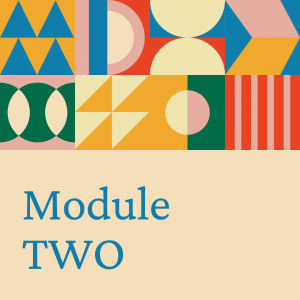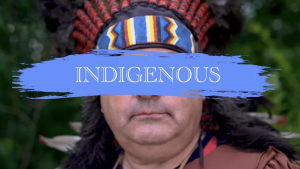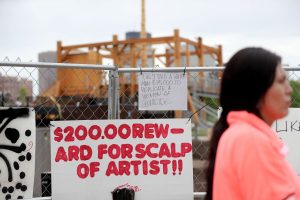
Website 1
Fake Indigenous art is the tip of the iceberg of cultural appropriation
https://www.cbc.ca/documentaries/the-passionate-eye/fake-indigenous-art-is-the-tip-of-the-iceberg-of-cultural-appropriation-1.6606937

What is it?:
“It is being revealed that a great deal of so-called authentic Indigenous art isn’t made by Indigenous people at all. Instead, it is made by non-Indigenous individuals and businesses who have taken on Indigenous identities and aesthetics. These people are often called “pretendians” by those immersed in the issue.”
Why I chose it:
I chose this article partially because it dovetailed so perfectly with our topic for week 6. The Zimmerman, Zimmerman, and Bruguier chapter talked about how to deal with ‘Wannabes’, and this article talkies about how ‘Pretendians’, but it’s the same idea, echoing across the years. I think this ads a really important perspective on the importance of how careful non-indigenous art teachers should be about how we treat traditional indigenous art-making practices.
Website 2
The Pretendians
https://www.cbc.ca/passionateeye/episodes/the-pretendians

What is it?:
A documentary from CBC’s The Passionate Eye featuring Anishinaabe author and playwright Drew Hayden Taylor. Taylor goes on the hunt for knock-off Indigenous art on the West Coast, and explores an explosion of dubious Indigenous heritage claims in Eastern Canada. He unpacks the concept of blood quantum — that one drop of Indigenous blood is enough to claim Indigeneity — and meets a university teacher who’s found her own Indigenous heritage being questioned on social media. Taylor also joins an American Cherokee woman, the director of the Tribal Alliance Against Frauds, as she tries to track down and confront an alleged pretendian teaching at one of Canada’s most prestigious universities.
Why I chose it:
Similar to my first website, which led me to this excellent documentary. I think the first part is something I would show my middle school students, because the conversations about fake indigenous art, particularly because it’s in Vancouver.
Website 3
Picasso, Primitivism And Cultural Appropriation. When artists adopt, do they also oppress?
https://christopherpjones.medium.com/picasso-primitivism-and-the-rights-and-wrongs-of-cultural-appropriation-1f964fa61cee

What is it?:
“What was Picasso doing here? In borrowing motifs from the tribal art he saw in the Trocadero, was he being ‘influenced’ by African art? Or did he perform a more pernicious act, by taking from a culture that didn’t belong to him – and in doing so, rehearsing the centuries-old romanticizing of ‘primitive’ peoples, as if the colonial enterprise had discovered a more natural expression than “civilized” man could achieve?”
Why I chose it:
I loved this question from the author of the article; “Is it possible for an artist to ever adopt elements from a different, especially minority culture without betraying the values that the recognition of cultural appropriation seeks to establish?” because it is impossible to disentangle this question from art history, and the history of colonialism.
Website 4
Primitivism: Cultural Appropriation in the Art World
https://blog.partial.gallery/primitivism-cultural-appropriation-in-the-art-world/

What is it?:
A brief discussion of some of the most famous artists who clearly appropriated from indigenous cultures, taking part in the trend of “primitivism”, which was the jumping-off point for cubism and later impressionism.
Why I chose it:
It could be a good jumping off point for me to create a lesson around these artists. I also like that it includes a list of contemporary Canadian artists and this quote at the end: “While nothing can be done to erase the harmful attitudes and actions of the past, it’s worth revisiting them to inspire further strides to reject colonialist systems. Not everyone can create art to do so, but everyone can support artists who are pushing for diversity and challenging norms.”
Website 5
“It’s Only Art”: How Art Controversy over Cultural Appropriation and Historical Trauma Can Move Toward a More Ethical Public Humanities
https://www.brown.edu/academics/public-humanities/blog/%E2%80%9Cit%E2%80%99s-only-art%E2%80%9D-how-art-controversy-over-cultural-appropriation-and-historical-trauma-can-move

What is it?:
An article discussing the fallout after a white artists created a piece of art critiquing capital punishment in America. The piece looked like a large hangman’s scaffold, and was erected without much thought or consideration very near to were the gallows used in 1862 to hang 38 Dakota men convicted of participating in the Dakota War; the largest mass execution in American history.
Why I chose it:
I really like the conversation that this event sparked, particularly the questions that the local art students began asking themselves; Who gets to tell which stories? What constitutes art? At what point does art about historical violence reinstate that violence? How accountable is an artist to communities who serve as their intended and unintended audiences? What frameworks or guiding principles can practitioners of public humanities follow to be respectful of the difficult and often painful feelings that can arise from artwork and reaction to it, and to not only acknowledge the historical trauma of specific communities, but ensure equity around artwork that deals with that historical trauma.
Website 6
Culture before Currency: Canada’s Treatment of Indigenous Art
https://inkspire.org/post/culture-before-currency-canadas-treatment-of-indigenous-art/-MF3HK3sN2Y7bcUBq8dk

What is it?:
Written in 2020, this article discusses the historical place of Haida art, juxtaposing it with how ingenious artists are typically treated, especially compared to white artists who are appropriating their traditional styles.
Why I chose it:
I appreciate the discussion about where the government is going right with appreciation (the decision made by the Royal Canadian Mint to commemorate Bill Reid’s work) and where Canada is going wrong (Prime Minister Justin Trudeau’s Robert Davidson-inspired tattoo). I think this article could be something grade 8,9 and 10 students would get a lot out of.









